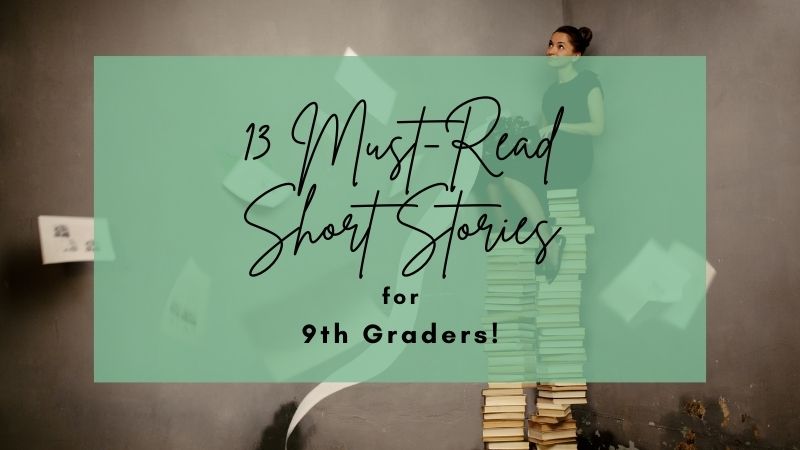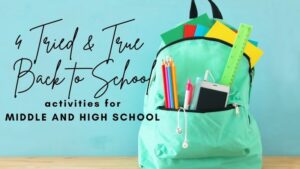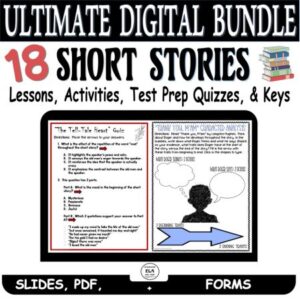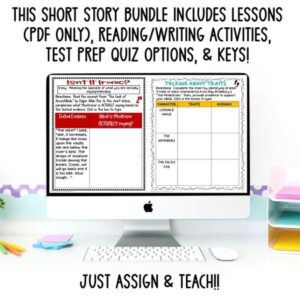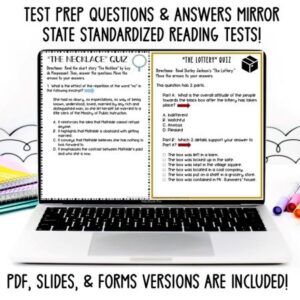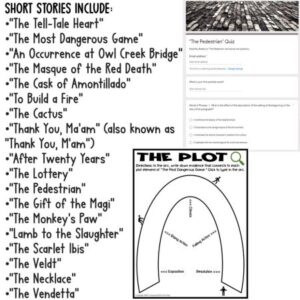Making the shift from middle school to high school can be a challenge for 9th graders and for the teachers of those 9th graders! But stacking your short stories for 9th graders with selections from Edgar Allan Poe, Ray Bradbury, Langston Hughes, Roald Dahl, etc. is an easy decision. With such short stories for 9th graders in your short story unit, students will experience amazing literature that sparks their interest, makes them gasp in surprise, rolls their eyes with what really is delight, and ultimately gives them an experience of literature that sets them up for success as they continue through high school.
This post aims to make your life easier with 13 suggested short stories for 9th graders that are brimming with opportunities for learning throughout this entire year!
Need help with Test Prep? Check out this FREE Pack of 3 Test Prep Activities to help students achieve success on standardized tests!
What makes a good short story?
Much like beauty, the definition of a good short story is in the eye of the beholder. The beholders, in this case, are you and your students! But taking into account the following six criteria will help you, as the teacher, to make decisions about short stories for 9th graders.
- Plot – The inclusion of some plot twists is engagement gold! They will push students to read a bit more deeply, challenge their preconceptions, and develop their current skill set with comprehension and fundamental literacy skills.
- Theme – Choosing stories with a relatable theme – an overall message – is good but not required. However, the theme can make or break a story. In 9th grade, choosing stories with a strong theme will help to establish a solid foundation of understanding for this concept.
- Characters – Characters can also make or break a story for students. A character with little dimension is less than ideal for interest and analysis. Choosing stories that students have something to dive into for the protagonist and even an antagonist is optimal.
- Connections to Audience – A good short story will engage the reader, and nothing speaks more to a student than something they can connect with in fiction. These connections are often personal, but some can be universal such as the experiences of friendship, growing up, or even family dynamics. A good short story becomes one where students might see themselves or their experiences but even more than that will allow them to consider their experiences in a different way.
- Connections to World – Beyond making personal connections, being able to connect stories to explain our lives is also important. And, more and more, we rely on stories to help to explain our world. Finding a story that resonates with students and with the big ideas of the world provides a chance for important thinking and discussion.
- Writer’s Craft – There is something to be said for appreciating the creative art and style of a short story. Looking at plot structure, word choice, character development, and more provides students with mentor texts for their own work. This doesn’t just mean their creative writing; rather, students can use lessons about sentence types, verb conjugation, and more to aid with their paragraphs, reports, or essays.
Need back-to-school ideas? Click below for help with making the start of the year stress-free!
13 Must-Read Short Stories for 9th Graders
Selecting good short stories for 9th graders can be a mix of these six criteria, but in the end, it’s a matter of finding what will meet the needs, wants, and interests of your students.
This list of 13 short stories for 9th graders is sure to help you find what you need for your students this year. We want good literature because it offers options for analysis and skills development too!
- The Tell-Tale Heart – Edgar Allan Poe’s classic of a character being haunted by his actions through a metaphorical heartbeat will hook students. Adding in the analysis of character and imagery is the reason this is a must-teach! Check out the bundle of activities to go with this story!
- Thank you, Ma’am – Langston Hughes’ story is one where the greater good wins out to change the course of a young man’s life. With its two-character focus, this story is ideal for character analysis and comparison. Get your copy of the full lessons here in digital and print.
- The Pedestrian – Ray Bradbury’s dystopian story set in 2131 features a man who walks the city while everyone else watches television. This seems like a simple premise, but when the man encounters the police and declares he’s a writer, the values of society are revealed. With its social commentary that remains poignant in our times, this story is a good one to explore theme. It also provides opportunities for text-to-world connections and discussion. Check out the full lessons done for you!
- The Veldt – Another of Bradbury’s science fiction short stories, this one defies all expectations with a virtual reality simulation gone quite wrong… or right depending on the point of view! To teach this story with an added focus on character and the symbolism of the title and setting, check out this bundle.
- The Gift of the Magi – O. Henry’s heartwarming story focuses on a young couple’s sacrifices to give each other meaningful holiday gifts. This story is a good choice for theme and big ideas as well as close reading and literary analysis with repetition, allusion, and irony. Check out all of the lessons for this story.
- The Necklace – Guy de Maupassant’s story of riches to rags and letting go of one’s pride provides such a marvelous twist at the end that this is a must-teach! For lessons with close reading and textual analysis with a focus on character, setting, and theme grab this bundle that’s all ready for you!
- The Most Dangerous Game – This story by Richard Connell is about a hunter of humans rather than animals. This story will ensure students understand unexpected plotlines with comprehension quizzes, tracking story elements, and writing about the effectiveness of one key aspect. You can find complete lessons with teacher answers here.
- The Scarlet Ibis – James Hurst tells the tragic story of a young boy nicknamed Doodle from the point of view of Doodle’s unnamed brother. This heart-wrenching story with a focus on flashbacks and foreshadowing will encourage students to examine the structure and infer the order of the story. Check out this easy-to-use bundle.
- Lamb to the Slaughter – A horror story with a side of comedy, Roald Dahl’s classic is a great option for close reading and character analysis. Get your copy of the lessons here.
- After Twenty Years – Two friends follow different life paths but plan to meet up in 20 years; however, their meeting goes awry with a delightful twist! This story by O. Henry can help students to break down the plot into chunks so they better understand character and action. Get the bundle of lessons here.
- The Monkey’s Paw – This story is best summarized as be careful what you wish for! The protagonist of W. W. Jacobs’ horror story is granted three wishes, but when he messes with fate, things go very, very wrong. Use this story to focus on summaries, particularly 1-sentence summaries, before diving into characterization. Get started with this lesson bundle.
- To Build a Fire – A classic Jack London man versus nature story in the Yukon Territories’ extremely cold setting. Explore the setting and its strong imagery with this full bundle of activities.
- The Cask of Amontillado – This horror story, also by Poe, told from the point of view of the murderer is a tale of revenge for a wrong seemingly committed long ago. The story is brimming with character details to track and analyze. Grab your copy of the full lessons for this Poe story here.
Want some ideas for the first days of school? Check out the post below!
Why Choose These Short Stories for 9th Graders?
Any and all of these 13 short stories for 9th graders will contribute to students’ understanding of good literature and the development of their literacy skills. Whether it’s close reading or finding and using textual evidence or even developing their thinking about character and theme, each of these short stories can help your 9th graders as they start their journey through high school.
You can get your ultimate bundle of all 13 short stories for 9th graders plus 5 more along with tons of activities to engage your students and support their literacy skills by clicking here. Additionally, each story is aligned to the Common Core standards and integrates standardized test preparation with full teacher answers for each and every activity!
And remember just because a story has been done once in class doesn’t mean that students can’t revisit it. Developing literacy skills is key! It’s all about making it fresh.
While the twists of some of the stories might not be new to students, exploring more about character, writing style, and even theme can remain ‘new’ for a lesson twist! Plus, when the story’s plot and its vocabulary are familiar to students, it can mean a shift to focus on something else such as inference, prediction, making connections, and more! This means these 13 short stories for 9th graders can be equally great for 10th-graders, too!
So in the first few days of school, help students (and yourself!) with that first single step on a thousand-mile journey by including short stories for 9th graders in your back-to-school plan!
Need more fun lessons and activities that incorporate good literature? Check out my store Kristin Menke-Integrated ELA Test Prep!

